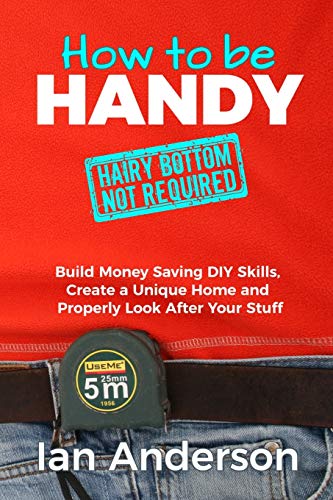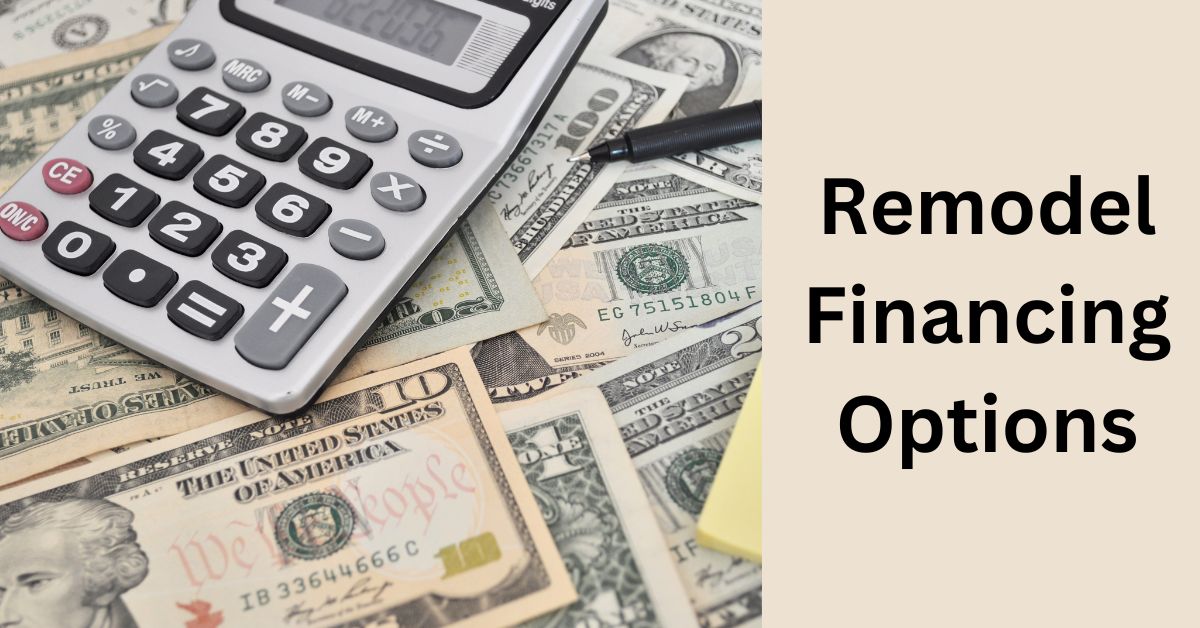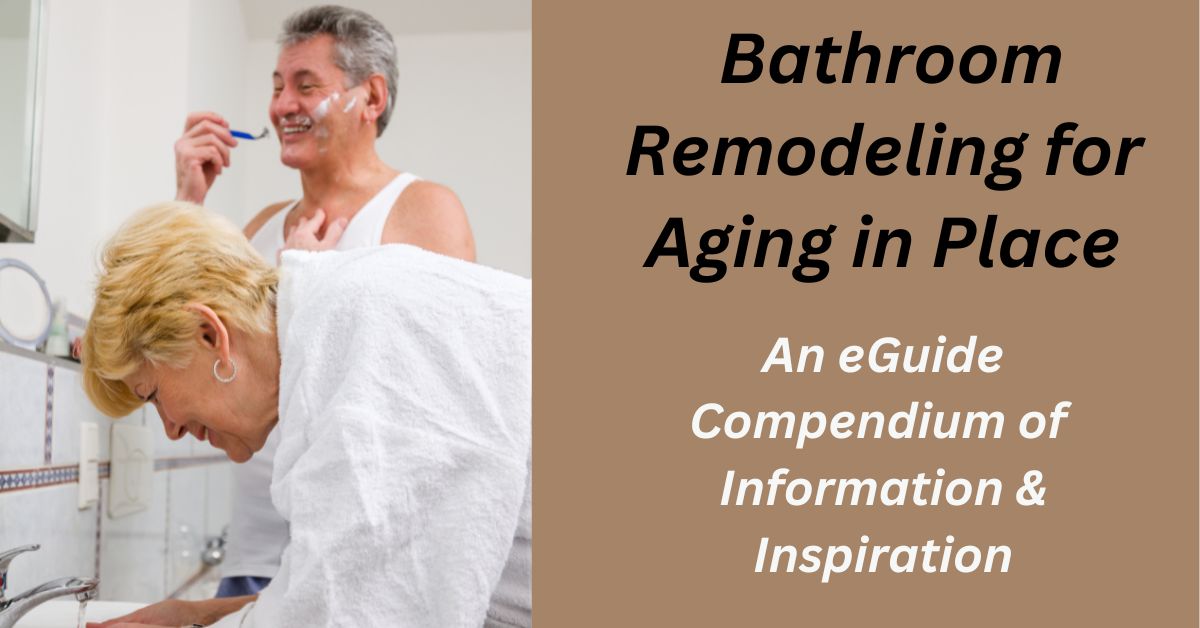Table of Contents
Note: If you came to this post on remodel financing options through a random search, please click on this parent page and our home page for more context.
Paying for Your Remodeling Project
So you need to explore your home remodel financing options, but you’re not sure how to approach them.
Well, there are many ways to do it. But the best option for you depends entirely on your circumstances, the extent of the project, and the amount of money required. Options include loans, grants, interest rate subsidies, credit cards, cash, and sweat equity.
We lay out here the types of financing resources and options available and provide links for you to explore further. Most of these resources have wide applicability. Some are more specialized.
The “Free” Option – Sweat Equity
Don’t laugh at this! Labor is a very valuable component of a renovation project, although the proportion of the cost of labor to the cost of material obviously depends on the cost of the materials used.
Take a kitchen remodel, which is the most material-heavy home renovation. With a kitchen, the labor component is around 15 to 30 percent of the total cost of a kitchen remodel. And a kitchen remodel can easily run $25,000 to $50,000. So, the labor component could be, say, $5,500 to $11,000. Plenty of money to save there.
Obviously, not every homeowner has the wiring or plumbing skills necessary to complete a kitchen remodel. So, consider hiring skilled labor, where necessary. And then purchasing the materials yourself. This would save the 20 percent markup typically added by a contractor to the materials component of his bid. In our example, this would be $5,000 to $10,000.
There are many areas of a remodeling project that do not require skilled labor – even if it is only cleaning up the site and taking out the trash. You can do some of this work yourself, save some money, and even have some fun. Get friends and family over. Throw a party.
By the way, being handy can actually be learned. Here is a recommended resource: How to Be Handy

Cash
Cash is the best “no strings attached to a lender” way there is of paying for a remodel project. If you have cash savings on hand or readily liquified assets, such as CDs or bonds at maturity, this is fast funding and free of any fees or interest.
On the other hand, many people do not have the kind of readily available cash on hand necessary for a remodel project. They may, in any case, prefer not to deplete these assets.
The Home Equity Option
If you have available equity in your home, there are three ways to tap into it: the home equity loan, HELOC, and the cash-out refi. Each has its pros and cons.
Home Equity Loan
The home equity loan is a loan that is in second position to the first. It is secured by your home and repaid in fixed monthly installments of principal and interest over a fixed term. Although there is no problem paying this kind of loan down earlier than scheduled.
Pros of a home equity loan:
- They carry lower interest rates than a credit card or personal loan
- They can make larger sums available for your project than a personal loan and would be appropriate for funding, say, a home addition or pool.
- Interest payments are (with certain upper limits) tax-deductible.
- They carry longer terms than a personal loan but usually not as long as the cash-out refi.
Cons of a home equity loan:
- It will deplete the available equity in your home, even though the project has likely increased its value.
- Usually a relatively short term (compared to a cash-out refi).
Bankrate.com has great information on home equity loans and the best places to get them.
HELOC
HELOC stands for Home Equity Line of Credit. It uses your home’s equity in much the same way as a home equity loan and is also a second mortgage. However, it is structured differently.
The HELOC has a draw period (usually 10 years) during which you can take out sums up to an agreed amount, depending on your equity. It then has a repayment period (usually 10 to 15 years) during which you pay off any balance in fixed monthly payments of principal and interest.
Pros and Cons of a HELOC: These are pretty much the same as a home equity loan, except that it has the added advantage of flexibility. As a line of credit, you can draw on it and also replenish it during the term of the loan.
Nerdwallet.com has great information on HELOC lenders.
Cash-Out Refinance
A cash-out refinance uses the equity you have built up in your home but is actually a totally new loan. The way it works is that you can typically borrow up to 80% or 90% of the equity, pay off the old loan, and use the cash left over to finance your renovation project.
Pros of a Cash-Out Refi:
- A long-term (up to 30 years) at a fixed rate and, because of the long-term, relatively low payments.
- If you keep the loan-to-value below 80%, you will avoid PMI (Private Mortgage Insurance) payments
Cons of a Cash-Out Refi:
- You will typically have closing costs and will pay points, just the same as taking out a loan on a new house.
Nerdwallet.com rates the best cash-out refi lenders.
Fannie Mae HomeStyle Renovation Loan
A federally insured HomeStyle Renovation Loan combines the cost of purchase and renovation of a property in a single loan. It is backed by Fannie Mae and is long-term (15 – 30 years).
Pros of a HomeStyle loan:
- You are borrowing against the future appraised value of the home. So you can pull out more money than with a home equity loan.
- Can be used for single-family and 2-4 unit investment property
- It can be used for any renovation (not for new “luxury” items like swimming pools).
- Only a 3% down payment.
- Relatively low-interest rates.
Cons of a HomeStyle loan:
- Requires a certified contractor
- Only 75% Loan to Value
- Funds are placed in an escrow account – not sent directly to the borrower.
FHA 203(k) Loan
A federally insured 203(k) loan allows you to combine a purchase or refinance loan with renovation costs.
Pros of a 203(k) loan:
- As within the HomeStyle loan, you are borrowing against the future appraised value of the home.
- Lower credit requirements than the HomeStyle.
- Loan proceeds can be used for many types of home improvement.
Cons of a 203(k) loan:
- FHA loans are limited in size. This varies by region and generally reflects local estate prices.
- You must use a qualified 203(k) consultant.
- Funds go into an escrow account not directly to the borrower.
- It involves monthly mortgage insurance premiums you cannot get rid of until you refinance or sell.
HUD has a great lender search page for this program. And you can find a 203(k) consultant near you here.
HUD Title 1 Loan
While the 203(k) loan can be used for a home purchase and major renovations, the federally insured Title 1 loan is really only suited to relatively minor improvements that HUD says “will make your home more livable and useful.”
This is good for an “aging in place” situation because you can use the loan proceeds for things like widening doors and installing access ramps for wheelchairs.
Pros of Title 1 Loans:
- Loans up to $7,500 are unsecured
- Although the lender will check for delinquencies, there are no credit score requirements
- There is no income requirement
- If secured, they are subordinate to existing loans
Cons of Title 1 Loans:
- Cannot be used for a home purchase
To find a Title 1 lender, use HUD’s lender search page.
EEMs – Energy Efficient Mortgages
EEMs are federally insured loans designed to finance energy-efficient home improvements. These improvements are in an “energy package.” This is a set of improvements based on recommendations by a qualified home energy assessor.
Learn about EEMs and more at Energy Star.
” HIP “ Home Improvement Program Loans
HIP programs are locally based, county by county, and provide subsidized (almost interest-free) loans for the purpose of minor home improvement. The mechanics are likely that your county will refer you to a local lender for a home equity loan and arrange the loan subsidy direct with them.
Basically, the county is subsidizing the loan in the interest of improving the local housing stock. Loan names and terms differ from county to county. And the only way to get detailed information is to contact your county.
Pros of HIP Loans:
- Valuable loan subsidy you do not have to repay that is worth thousands of dollars.
Cons of HIP Loans:
- Red tape, timelines, and oversight.
- Loans are only available up to around $50,000.
- Tight restrictions on what you can spend the money on (eg, no swimming pools).
Be prepared to deal with a lot of red tape but it is worth it because interest is usually a big part of loan repayment.
To learn more about HIP programs in your area, I suggest you simply Google “(your county) HIP program.”
Personal Loan for Home Improvement
If you have good to excellent credit you can borrow any amount, usually up to $100,000, to fund your home improvement project.
Pros of personal loans:
- They are unsecured so you do not need equity in your home.
- You can borrow smaller amounts. With a home equity loan, the minimum is $10,000.
- Interest rates are based on the consumer’s credit score and credit history.
- Funds are available very quickly.
Cons of personal loans:
- Interest rates are higher than with home equity loans.
- Repayment periods are shorter than with home equity loans.
- The interest you pay is not tax-deductible.
Nerdwallet.com is a great resource for personal loans.
Zero Percent Credit Cards
If your renovation project is limited in extent, say painting a room or putting new flooring in the bathroom, consider using credit cards. If the project is only going to cost two or three thousand dollars, it makes no sense to go through the time and aggravation of applying for a second mortgage.
In this case, a credit card can make perfect sense, especially if you use 0% introductory rate cards and pay them off before you have to pay interest. Or, you juggle them by paying the card off with another 0% introductory rate card.
Pros of credit cards:
- Zero interest if you are careful.
- Fast availability of money.
Cons of credit cards:
- Very high interest rates unless you are careful
Again, Nerdwallet.com is our best resource for zero-percent interest credit cards.
Aging in Place Renovation Financing
Home and Community-Based Services (HCBS)
The government is looking to reduce its Medicaid costs by encouraging seniors to age in place rather than move into a nursing home. This can include paying for home modifications. This is all operated through local government agencies.
To find out more for your area, Google “(your county) or (your state) HCBS”
U.S. Administration on Aging
The U.S. Administration on Aging has a useful resource for home repair and modification at its Eldercare Locator.
National Council on Aging
The National Council on Aging has a resource you may find helpful on its Benefits Check-Up page.
Disabled Veterans Renovation Financing
The VA makes grants available to modify the homes of veterans to accommodate a disability here Disabled veterans can qualify for grants to modify an existing home to accommodate a disability through its VA Home Loans Program.
Rural Residents Renovation Financing
The U.S. Department of Agriculture has a Direct Home Loan program that can help in the repair or renovation of a rural home. Interest rates can be as low as 1%. It is designed for low-income applicants.
- Related post: Remodel Checklist
- Related post: Loan Broker or Direct Lender





Leave a Reply